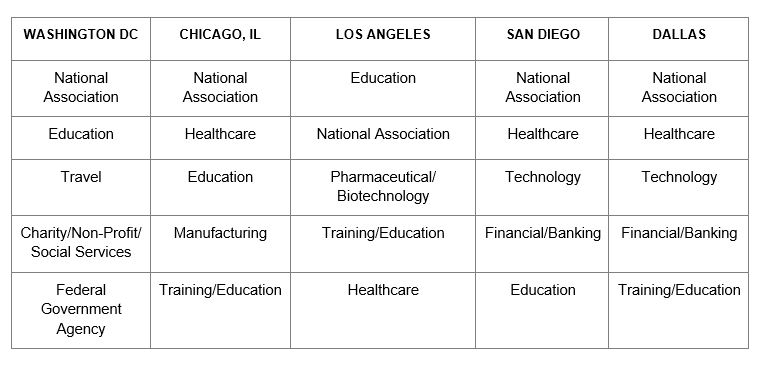
Data reveals nearly 80 percent year-over-year growth in U.S. meetings and events
ARLINGTON, Va. — April 5, 2023 — Knowland, the world’s leading provider of data-as-a-service insights on meetings and events for hospitality, announced today that the Washington, DC-MD-VA market led the U.S. meetings and events industry by volume for March. Second place again went to Chicago, with Los Angeles-Long Beach in third. The leading industry driver for meetings was National Associations across four of the top five markets. This data is a subset of Knowland’s sales pipeline generation platform designed to help hoteliers build and protect a hotel’s revenue base.
Knowland’s data provides unique insight into the meetings and events industry to help hotel sales teams increase sales and profitability, whether in the meetings and events space or sales in general. Washington D.C. jumped ahead of other markets this month with its renowned National Cherry Blossom Festival in peak bloom from March 22-25, drawing groups and tourists from around the world. The market averaged 200 attendees per meeting and 5,468 sq. ft. of space used, and an average of 16 bookings per property for the month.
• Year-over-year comparison – March 2023 event volume increased 79.6 percent over March 2022.
• Top five markets (by event volume) – Washington DC-MD-VA was in the lead hosting National Associations, followed by Education and Healthcare. The following four markets, Chicago, Los Angeles, San Diego, and Dallas rounded out the top five markets. The chart below provides additional insight into the top drivers for these markets.
• Top Five Markets (by percentage growth) – The top five markets by year-over-year growth in meetings and events are Raleigh-Durham-Chapel Hill, NC; Fort Myers, FL; Oahu Island, HI; Jacksonville, FL; and Memphis, TN.
About the Data: Insights presented are a result of the analysis of meetings and events data acquired through Knowland data collection and aggregation methods, including field reporting and automated methods of customer and non-customer data collection in primary, secondary, and tertiary markets, as well as its large historical database.



